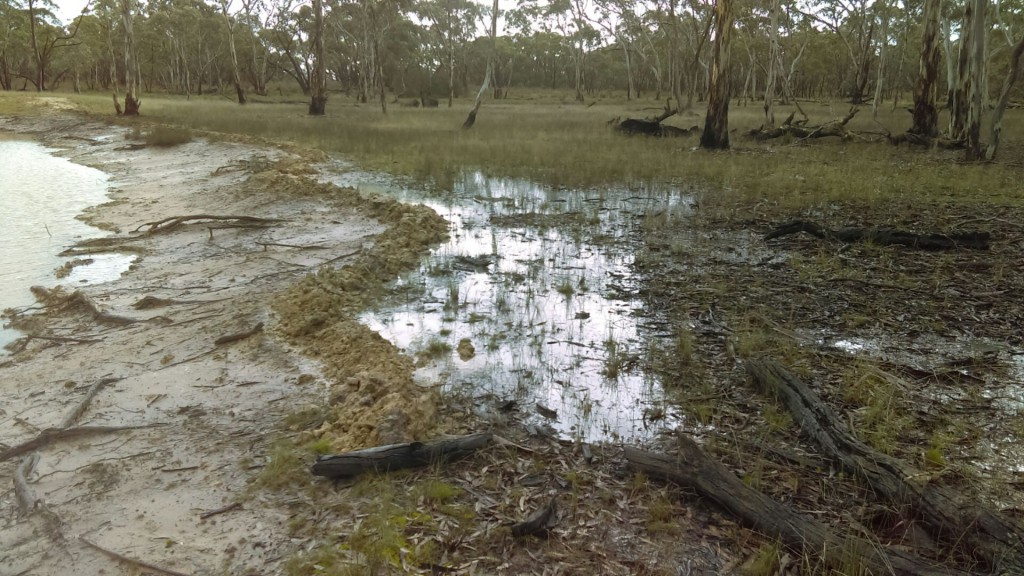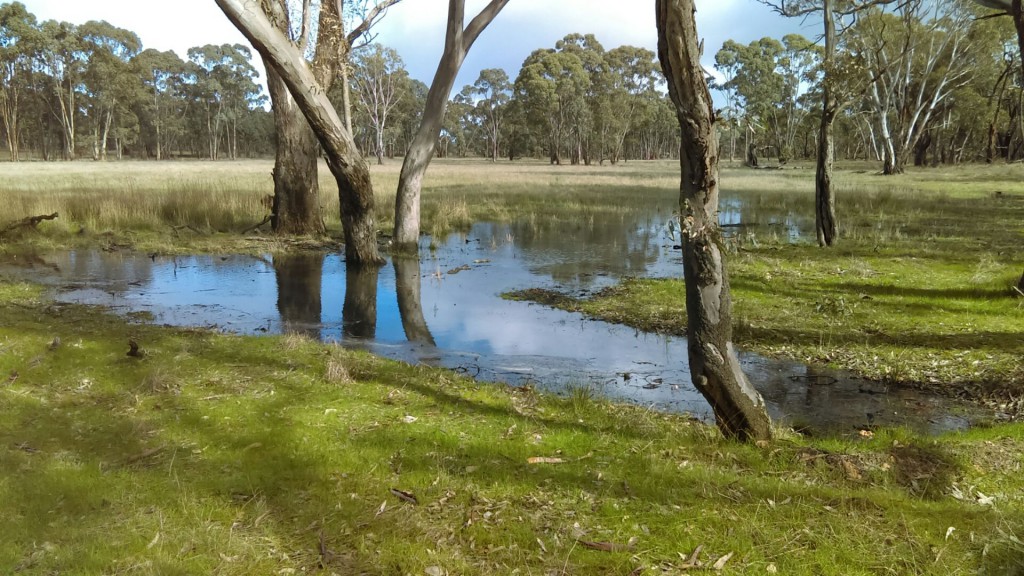Managing water on the flats at Eaglehawk Waterhole – a different kind of wetland restoration
Thanks to the wet spring last year, we finally saw NGT’s Eaglehawk Waterhole (our restoration reserve in the Upper South East), back to looking at its best – with large areas of shallow seasonal wetland inundating the SA blue gum and buloke woodland flats for the first time since 2013. However, we also noticed that in a few places, water was flowing off the flats and draining into the artificial dams constructed across the property – a legacy of its past life as a grazing enterprise.
So, in January 2017, a Green Army team (under the supervision of Owen Williams) dropped through for a day or two to assist with moving some dirt to create our first trial low-level stop-bank, to prevent all water on the flats from running into one large dam in the centre of the property (in this case, ‘the’ Eaglehawk Waterhole), and slow the drying of the naturally wet flats, for the next time it got wet. Then in July 2017, another Green Army team dropped by again for a day to provide further help with a stop-bank at another dam in the north of the property. This watercourse area is probably the most significant on the Eaglehawk Waterhole property, but was a much larger job (50m+) compared to the two 3m stop-banks.
Well, after recent rains of 30-40mm, it has become very wet again this year – and we can report that our efforts were well worth it. Water is lying all over the place at Eaglehawk (as expected), however the following photos show water beginning to bank up at each dam, helping to keep the wet flats wetter, for just that little bit longer.
As you can see, wetland restoration can take many forms!
Thanks to Andy Lines for his photos.


